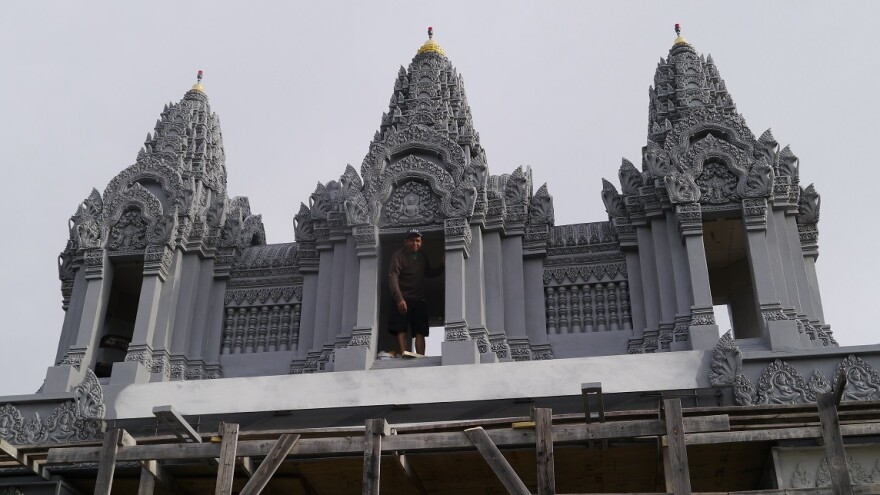For Southeast Asians and some South Asians, mid-April is the official start of the New Year based on early Agrarian calendars. This weekend, a Buddhist temple in Keller marks the occasion with its annual water festival.
The celebrations are often held on temple grounds or meditation centers. There’s one in Saginaw, Fort Worth, Dallas, Rockwall, and many more cities.

There’s traditional dances, of course, and delicious home-made food sold from small stands. Families do lots of spring-cleaning. There’s also story-telling.
“Long, long time ago, before the Buddhists,” he says, “there was a guy who controlled the whole world.

Whoever had problems, they call him.”
That’s Nheme Manivanh, a community leader who helped to build the Lao temple in Fort Worth. It’s called Wat Lao Buddhasamarkee. It’s on three acres, surrounded by farmland.
On the property sits the guy Manivanh refers to. He’s the Hindu God Brahma, with four faces, to observe the North, South, West and East. And he’s got many arms holding objects. During April, monks move the revered figure, along with other gold Buddha statues to public areas. Visitors will wash the Buddha with fragranced water.
“Whoever can water the Buddha, looks like they can create good for themselves,” Manivanh says. “People thinking they can clean up the bad from the mind.”
That’s why many parents bring their children to the temple bearing fruit, flowers and meals for monks.

“The more people are coming into the temple,” he says, “the more chance they can teach them to do the right way.”
Meditation and chanting are all part of New Year celebrations, says Somboon Rattanawerapong, a monk who lives at Wat Lao Buddhamahamunee in Arlington.

“We never push,” he says. “People believe. We just show them how to be good. To be nice, with all.”
People in Southeast Asia and parts of South Asia may call New Year by different names, he says, but the meaning is the same, a time for healing and renewal.
The last New Year celebration will be at Wat Lao Saginaw on April 24th through the 26th.


